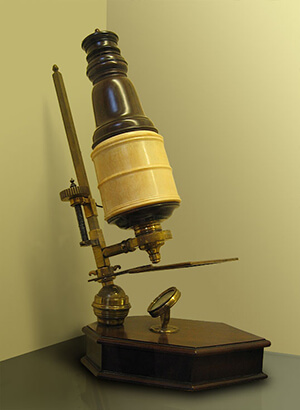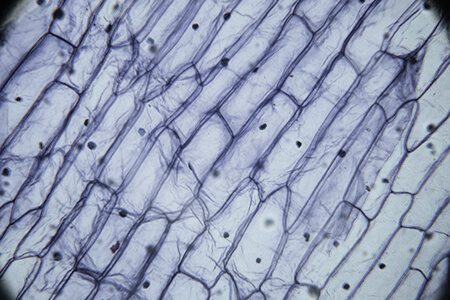1 | The Development of Microscopes
The Development of Microscopes
- Many structures within living and non-living things are too small to be seen with the naked eye – in other words, they are microscopic.
- A microscope is a device that enables the observation of microscopic objects.
- Microscopy refers to the use of microscopes to observe microscopic objects.
- In 1590, two Dutch spectacle makers, father-and-son team Hans and Zacharias Janssen, developed the first compound microscope, consisting of two lenses.
- In 1665, English scientist Robert Hooke began using a microscope that he built himself to observe living things. When he viewed thin slices of cork under a microscope he described seeing “air-filled boxes” that were “distinct from one another”. He later coined the word ‘cell‘ to describe these boxes.
- In 1674, Dutch scientist Anton van Leeuwenhoek made the first observations of microorganisms when he viewed samples of pond water under a microscope.
- The development of microscopes opened up a whole new world for scientists, enabling them to view microscopic objects for the first time.
- Microscopy has led not only to the discovery of cells and microorganisms, but many other structures and processes that occur within cells and living things.
- Microscopy has also enabled scientists to compare cells of different types of organisms, which has helped to classify them into different kingdoms that are largely based on differences between their cells.
- The increase in the magnifying power of microscopes has continued over hundreds of years, enabling scientists to observe smaller and smaller details of living things.

Even though early microscopes were very simple, their development lead to many important biological discoveries.
(Image: Solipsist, Wikimedia Commons)
- Some key developments in our understanding of cells, due to advancements in microscopy, are described below.
Date Development 1300s Italian monks developed the first lenses as reading glasses, by shaping glass with a special type of quartz. 1590 Hans and Zacharias Janssen (Holland) developed the first compound microscope. 1665 Robert Hooke (England) made the first observation of cells in thin slices of cork. 1674 Anton van Leeuwenhoek (Holland) made the first observation of microorganisms in samples of pond water. 1831 Robert Brown (Scotland) discovered the cell nucleus in plant cells. 1838 Matthias Jakob Schleiden and Theodor Schwann (Germany) observed yeast cells budding to produce new cells. They proposed that cells were the building blocks of all living things. 1859 Rudolf Virchow (Germany) proposed that all cells were derived from pre-existing cells through cell division. 1879 Walther Flemming (Germany) used staining to observe the processes involved in cell division and described chromosomes for the first time.
Key developments in the development of microscopes
The Cell Theory
- The accumulation of discoveries made possible by the advent of microscopes lead to development of the cell theory, which states:
- All living organisms are composed of cells.
- Cells are the basic unit of life.
- All cells are produced from pre-existing cells.

Our knowledge about cells is directly due to the advent of microscopes.
(Image: PiotrZakrzewski, Pixabay)

